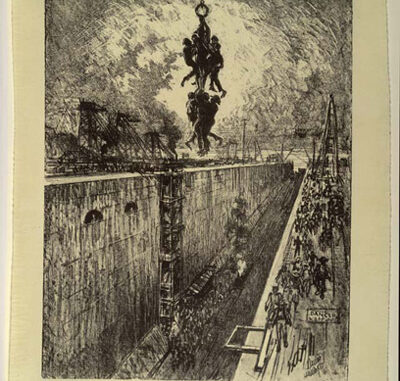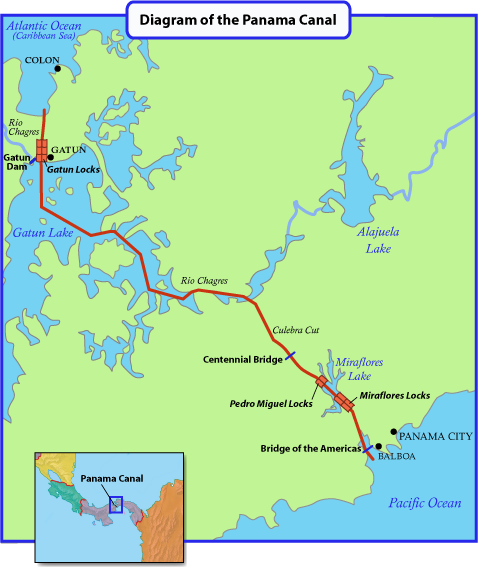

The McGraw-Hill Companies
Diagram of the Panama Canal
Is the Panama Canal really needed? Before the Panama Canal was built, trade ships traveling between the Pacific and Atlantic Oceans had to go around Cape Horn in South America—a trip that involved two weeks and 8,000 miles. So yes, this incredible feat of engineering was very badly needed! The canal, stretching through the narrowest part of Panama, is 51 miles long. Depending on size, ships take between 8 and 12 hours, plus wait time, to pass through from end to end. It cost the United States around $375,000,000. Some 75,000 people worked on the project, excavating 204,900,000 cubic yards of material. During the beginning French phase of the project, some 20,000 workers died from disease or accidents, and about another 6,000 died during the American phase.
The concept of building a canal began back in 1534, when King Charles I of Spain sent surveyors to evaluate such a project. Their conclusion was that it couldn’t be done, so Spain lost interest. Then, with the California Gold Rush of 1849 as a huge incentive, a group of private companies from the United States acted on the crucial importance of connecting the Pacific and Atlantic. They built and financed a railroad running between the city of Colón on the Atlantic coast and Panama City on the Pacific coast. Work began in 1850 and was completed in 1855. The existence of the Panama Railway turned out to be a major factor in choosing Panama over Nicaragua as the site of the canal. The French, who had in 1869 successfully completed the construction of the Suez Canal in Egypt, were eager to take on what they thought would be a similar project. Boy, were they wrong!
Explore More:
1. What important event in world history was happening at the same time as the opening of the Panama Canal? How do you think this affected its opening celebrations?
2. The building of the canal spanned three U.S. presidencies. Look up the names of the presidents, their years in office, and their roles in relation to the Panama Canal.